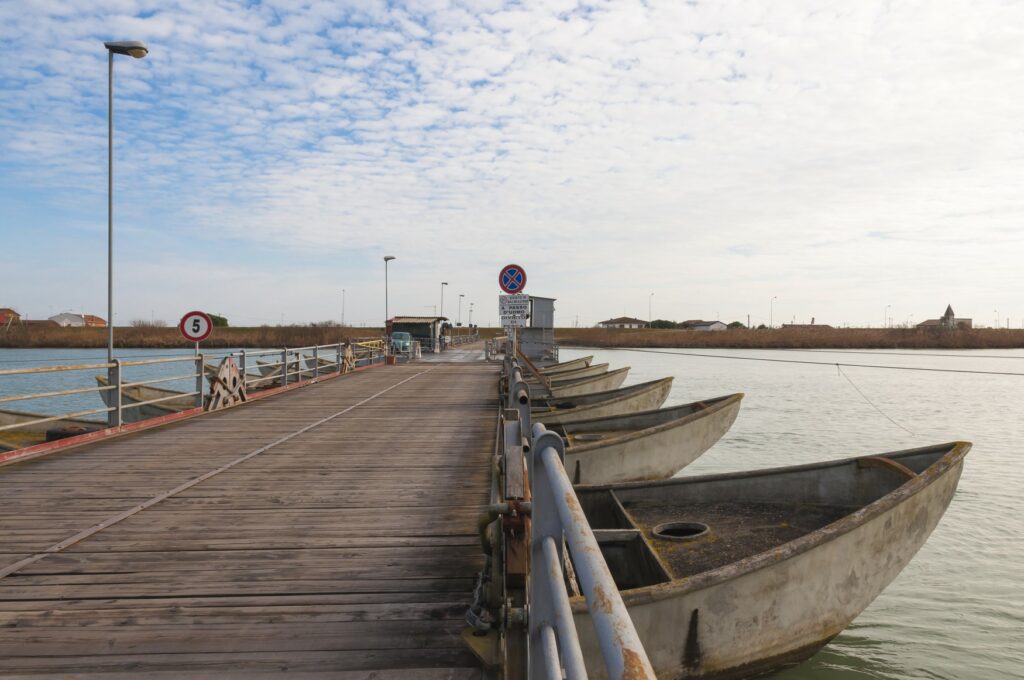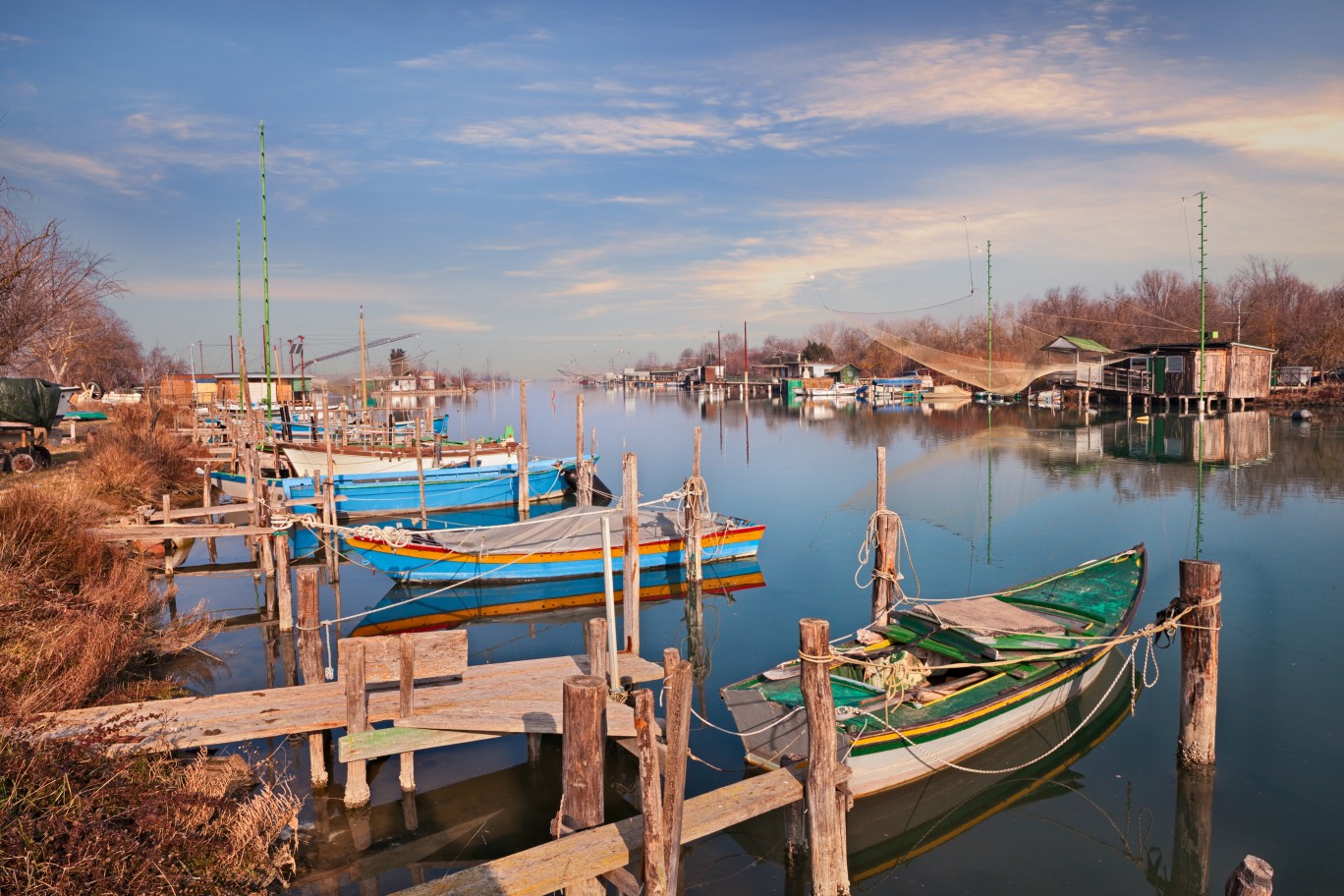It is the longest river in Italy and it gives the name to one of its richest areas, the Pianura Padana, but the Po, especially for the people who live along its banks, from Piemonte to Emilia Romagna, it’s much more than that. It’s livelihood and fertility; it’s wealth and happiness; it’s history and family. It’s memories and future at once. It is a human, economic, natural, and historical treasure. The Romans called it Padus, the Ligurians Bodincus, the Greeks Pàdos. Great cities were born throughout the centuries thanks to its presence, including Turin, Piacenza and Cremona, once Roman colonies or, in the case of the first, military settlements. In its Naturalis Historia, Pliny the Elder wrote that you could, in fact, sail the Po from Turin, in Piedmont, all the way to the sea. Some of its emissaries were also navigable, which made its whole basin an incredibly large means to communicate and, crucially, to transport goods and people. Indeed, ships kept on being used to move people between Pavia and Ravenna well into the 5th century, when the Western Roman Empire was crumbling. Of course, the river also had strategic and military importance, especially in the Late Antique and early Medieval periods: for instance, we know it was particularly vital during the Gothic-Greek war and the siege of Ravenna in the mid-6th century.
In these scorching days of draught, when the heat, in some parts of the country, reached 40 degrees Celsius (over 100 F), our river, the Po, has been suffering greatly, with its levels dropping so low that old World War Two-era boats have resurfaced. Besides these interesting tidbits, there are issues connected to the situation, because its waters are used to nurture the lands of the Pianura Padana, fertile soil where Italian agriculture reigns sovereign.
But the Po is more than this, we said, because it is also its people and their traditions: it flows through four of the richest and largest regions in the country, Piemonte, Lombardia, Veneto, and Emilia Romagna, carrying along the voices, dreams, and thoughts of the men and the women living along its banks. It springs from Pian del Re, on the slopes of Mount Monviso, the most recognizable mountain of the Cottian Alps, and one of the highest in Europe, with its almost 4,000 meters of altitude. In Piedmont, it quickly turns from a crystal-clear alpine creek to a majestic river, as we see it in the region’s capital, elegant Turin. The Po, there, is mostly a thing of culture and love, with its docks, just off the beautiful Piazza Vittorio, being one of the most cherished corners of the city by both locals and visitors.
Andrea Carpi, author of 35 Borghi Imperdibili lungo il Po tells us more about the places we encounter along the river. In Fontanetto Po, in the Vercelli province of Piedmont, the river meets for the first time rice fields, of which it remains, all along the Pianura Padana, the greatest nurturer. Then, Carpi continues, it holds hands with Sartirana (Pavia) and its castle, and Calendasco (Piacenza), which was, in the Middle Ages an important port, also because pilgrims traveling to Rome would often use it.
In Zibello, in the province of Parma, the Po turns into a synonym for good food, because it’s here that the famous culatello di Zibello DOP is produced. In San Benedetto Po (Mantova), we find a beautiful Benedictine abbey, while, closer to its delta, we meet Stellata, which lies right on its banks, known for its fortifications. Its influence and charisma are so strong that even in Ferrara, a city blessed by many a beauty, but not with the presence of the Po, one feels like its waters are just around every corner – of course, the Po does flow in the province of Ferrara and, in fact, not far from the city.
Its delta is a place of natural marvels, so much so that it is part of UNESCO’s world heritage, to which it was added in 1999. It spans over 786 square kilometers or 488 square miles and touches upon Veneto (the Polesine area in the province of Rovigo) and Emilia Romagna: there are lagoons, dunes, and golene, or flood plains, large areas where the Po meets the earth when it leaves its banks. It’s a middle world, along the Po, where past and present, earth and water, meet and mingle.
But the Po gives us also good food, and not only because it is so important for agriculture. When you make your risotti, thank the Po, because our beloved Carnaroli and Arborio grow along its banks; but don’t forget Chioggia’s radicchio, Polesine’s melon, or the delicious Melara pumpkin. The cuisine, along the Po, is that of our North: lesser known than our colorful and musical South, but just as beautiful, with its mountains and gentle hills, its reserved people, and elegant towns. There is a quietness, in the Northern regions of Italy, that brings you closer to the sky and the clouds, or perhaps it’s the Alps, who knows.

But food! Food is rich here, and full of substance and simplicity: think of Piedmont’s roast meats and creamy, mature cheeses or Emilia-Romagna’s tortellini and Lombardia’s torrone. Food which is gorgeously rich and humble, at the same time, just like the soul of the people of these lands.
Rivers, you see, are living creatures. They breathe and run and move, just like we do. They nourish and protect, but can also become dangerous and lethal: again, just like Mankind. The Po, is the eldest of all Italians, the one who saw wars and battles, moments of joy and moments of tears. It’s the ancestor we all share and the father that has been feeding us since we’ve existed.






























